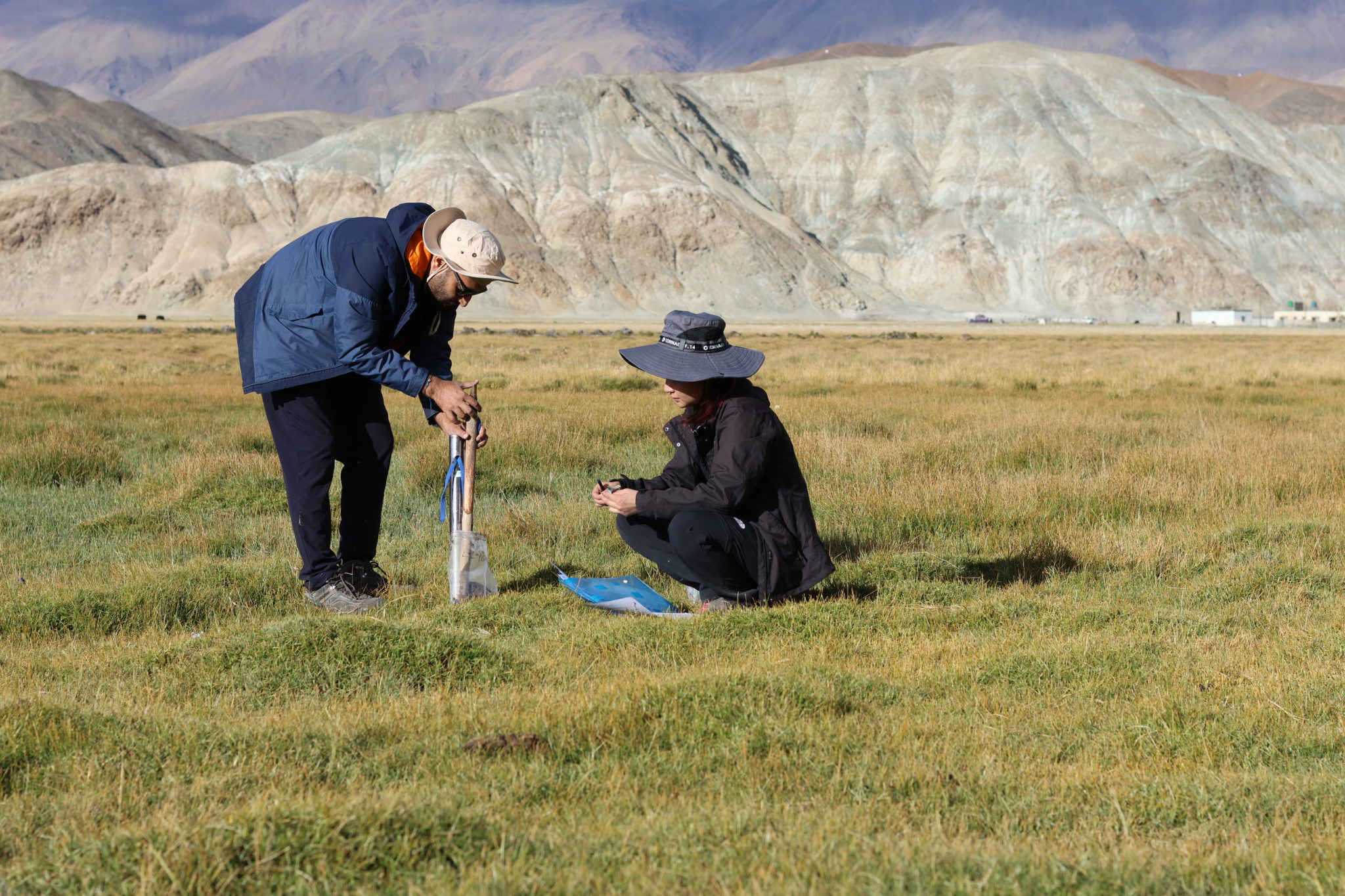
Ladakh Wetlands Expedition: A field mission to assess Biodiversity and Carbon Values of the high-altitude wetlands in Cold Desert Landscape of Ladakh
-
Integrated management planning
-
Species
-
Wetland values, status and trends
India provides critical stopover sites to over 90% of the bird species known to use the CAF in search of refuge, food and rejuvenation. Wetlands in the Indian Himalayan Region play a pivotal role in providing space and resources for birds to breed & nest, and rejuvenate to continue and complete their annual life cycle stages.
Wetlands International South Asia places a high priority on the conservation and management of these wetlands. Dhruv Verma (Senior Technical Officer) and Apoorva Thapa (Junior Technical Officer—Biodiversity) undertook a mission to UT of Ladakh to further this endeavour from September 12 to September 19, 2003. During the mission, a focus group discussion on integrated management planning and management effectiveness evaluation of key wetlands; and implementation of Amrit Dharohar, A Government of India’s initiative to conserve Ramsar Sites of Ladakh was held with the officials of the Wildlife Protection Department, UT of Ladakh, WWF-India and UNDP. The meeting highlighted the need for primary surveys and multi-stakeholder engagement for effective management of these wetlands.
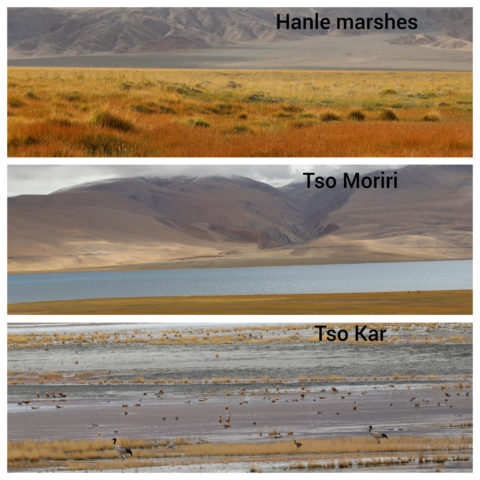
A field expedition to the Changthang region’s wetlands namely Hanle marshes, Tso Moriri, Puga and Tso Kar was undertaken to assess biodiversity and ecosystem services values of these wetlands. Key informant interviews, vegetative samples, a visual encounter survey, and soil sampling for carbon stock evaluation were conducted to understand the ecological character of these wetlands. The Indian wild ass (kiang), black-necked crane, ruddy shelduck, lammergeier, blue sheep, and other important wildlife species were observed during the survey.
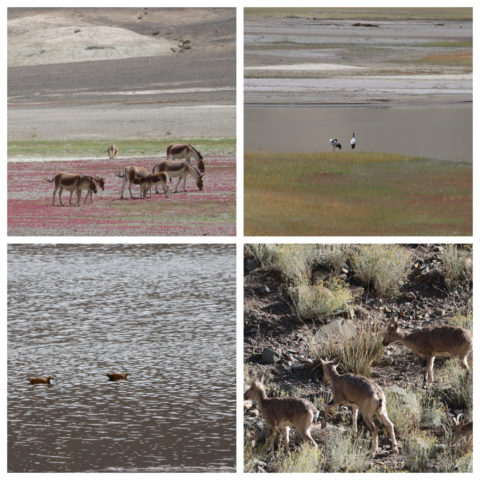
(Key wildlife species observed during the field visit (Indian wild ass (kiang), black-necked crane, ruddy shelduck, and blue sheep)
The key threats identified during the field trip were duly noted which would be addressed in the Integrated Management Plans. Increasing tourism and infrastructure development is leading to hydrological fragmentation, habitat destruction & encroachment and pollution. Strengthening Communication, Capacity development, Education, Participation and Awareness is identified as an important management action for making the local community, tourists and other stakeholders footprint wetland positive.
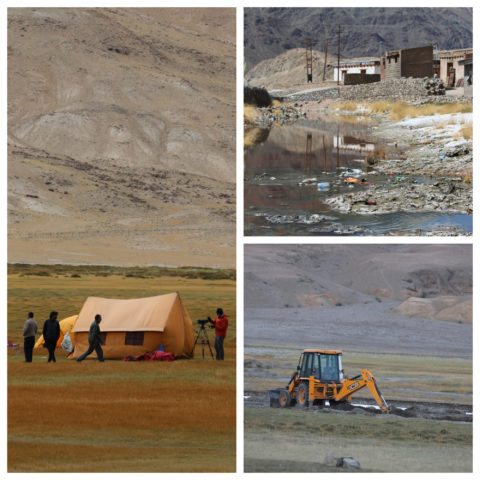
(Key threats to the wetlands: Human disturbances (Puga marsh); pollution (Chumathang hot spring); habitat destruction (Hanle marshes)
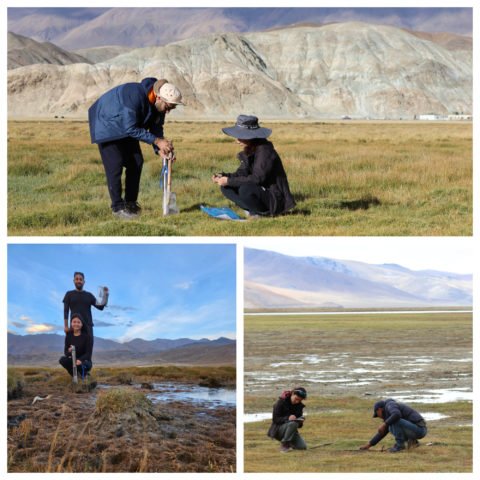
(Soil sample collection in some of the carbon-rich wetlands of the Changthang region, Ladakh)
